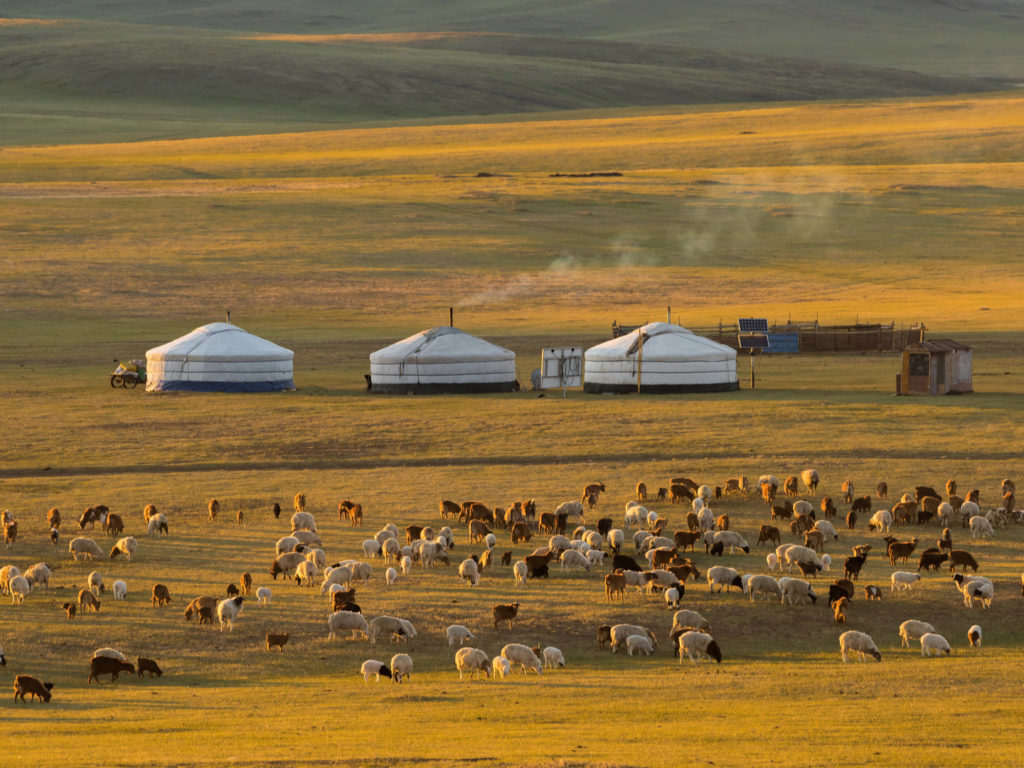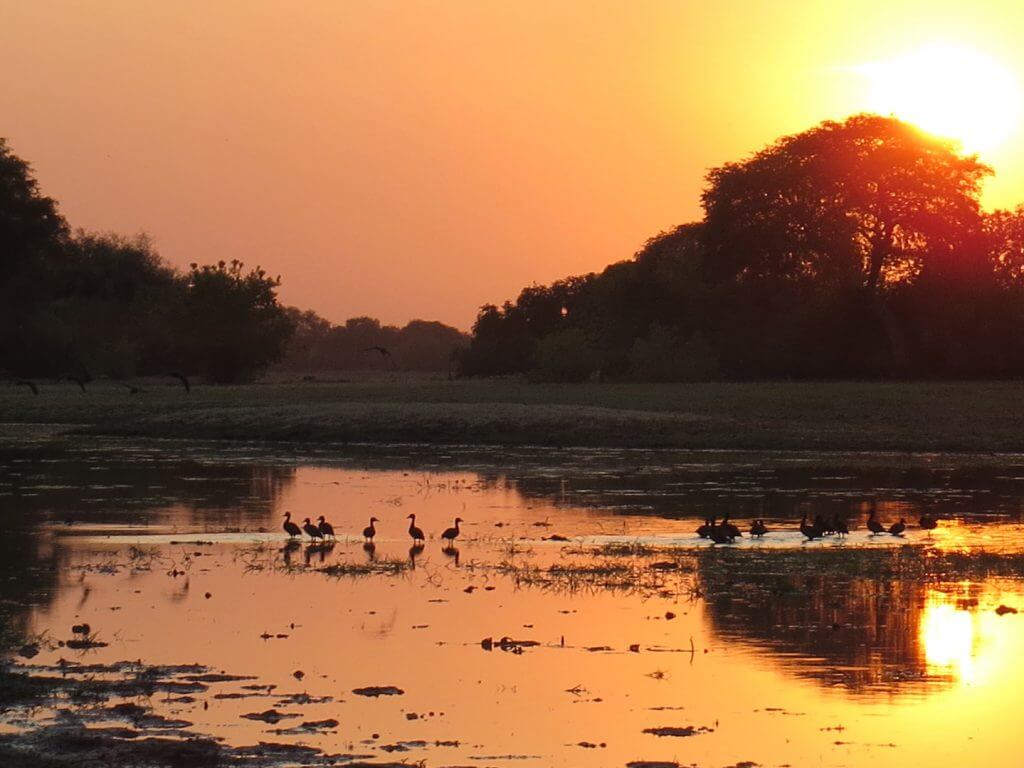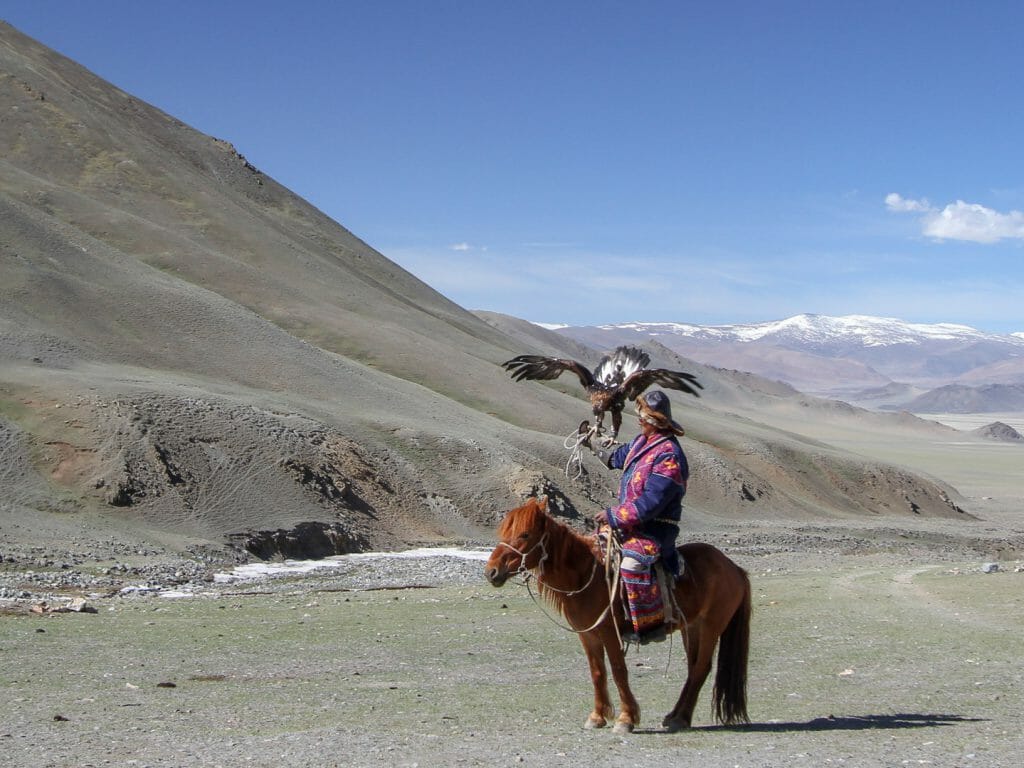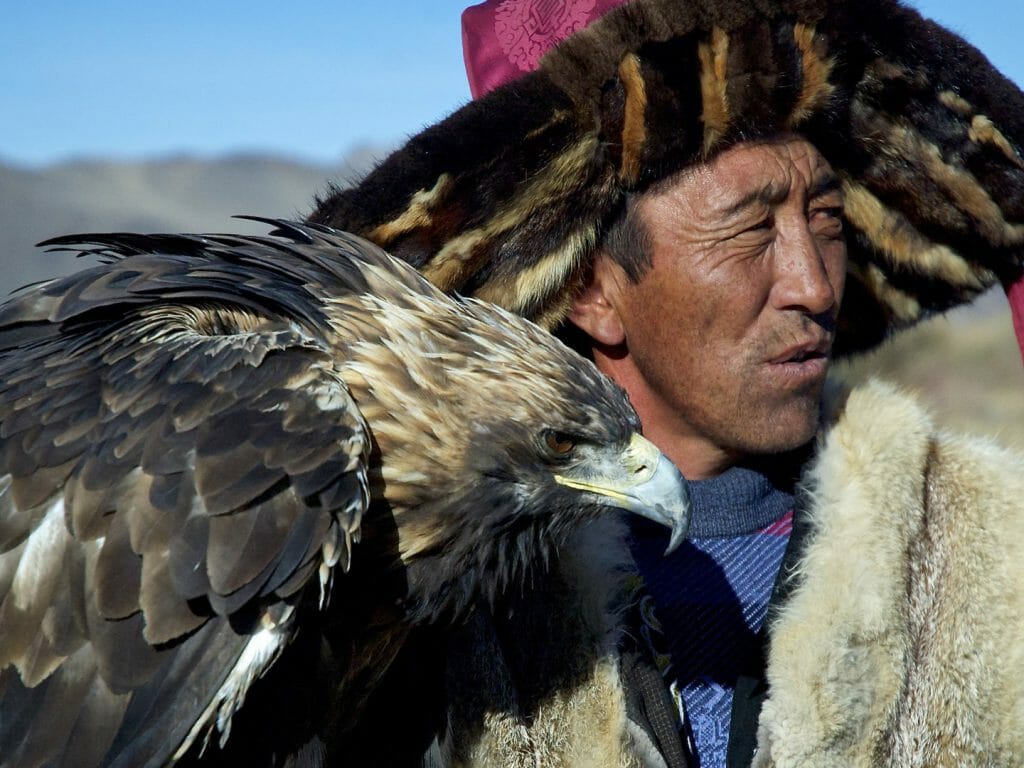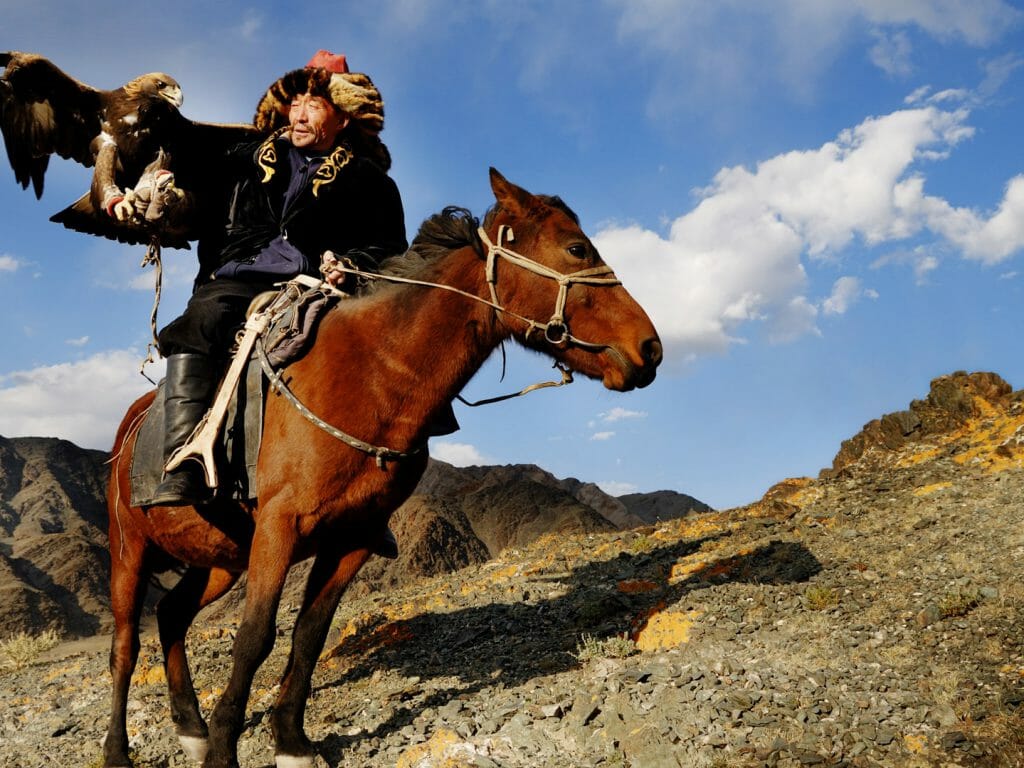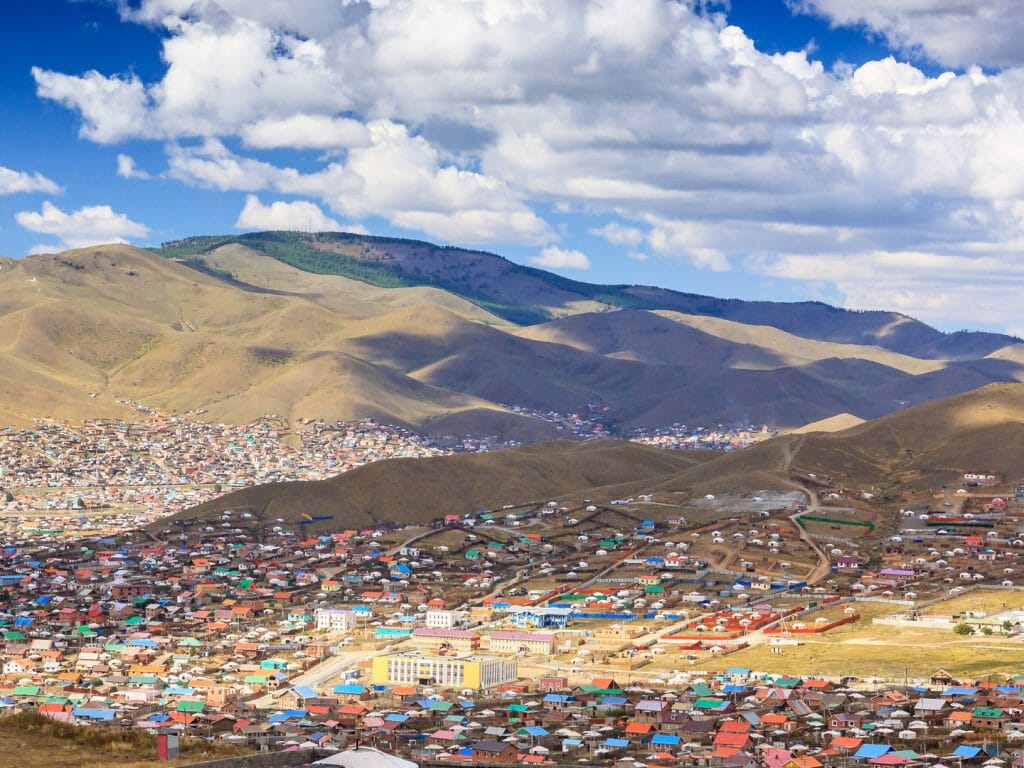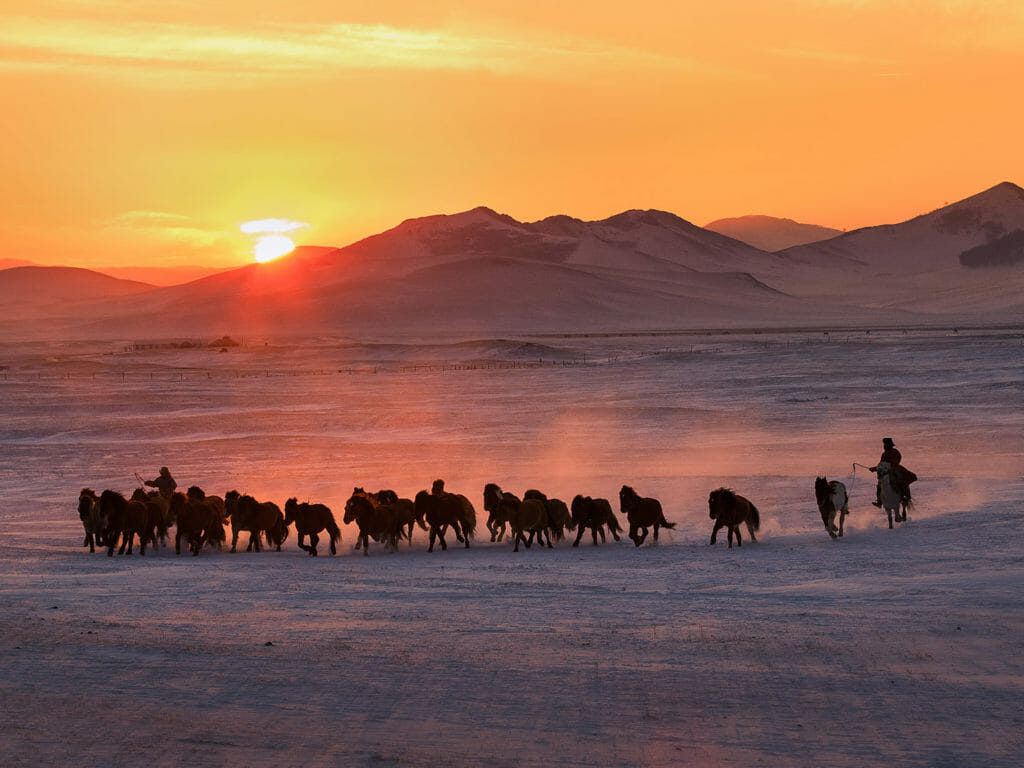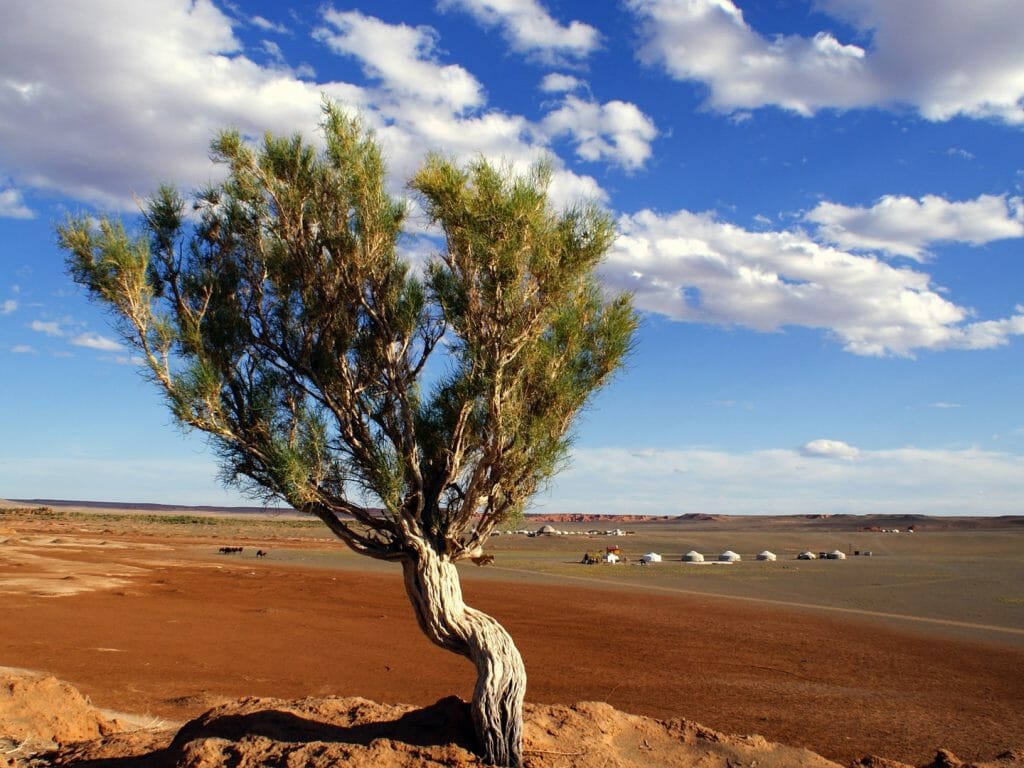I am flying from Ulaanbaatar to Uglii in the far west of Mongolia. Beneath me, dark patches of forest, multi-coloured lakes and strips of undulating, bronze sand give colour and depth to the otherwise desolate landscape. Unbelievably, next to these features – on the edges of the forests, by the shores of the lakes and in the shadows of the dunes are people.
The tops of their gers reflect in the sun and shine like beacons from a forgotten world. In contrast to their natural surroundings these fabric homes are tiny but their presence out here in the silence, speaks volumes about a people with an innate will to survive, living a life far removed from the rest of the world. My anticipation builds at the prospect of exploring the wild country beneath me and meeting the extraordinary nomads who call it home.
I think back to what Jan, Steppes’ partner in Mongolia, said to me when we were planning our trip together.
“How do you spell Chigertei? I can’t find it on Google Maps…” I said to him.
“Forget Google Maps, they haven’t discovered this part of Mongolia yet, you’ll just have to trust me” he said with a mischievous laugh.
Walking through the bucolic valley of Chigertei I am glad I placed my trust in Jan. Two figures on horseback are ahead of us, adeptly corralling a large herd of goats. In front of the livestock is a small lake on which terns, cormorants and gulls feed. On the near horizon, the snow-capped Altai mountains that form the boundary between Mongolia and China, are pin sharp in the silvery light of late morning. The distant bleating of goats and the odd whistle and shout of the herdsman are the only sounds to break the serene silence. My senses are acutely attuned to the simple panorama in front of me, as if I am watching this timeless scene unfurl on an enormous high-definition screen with surround sound.
The two herdsmen dismount from their horses, and it becomes apparent that one of them is, in fact, a young boy, no more than ten years old. Having effortlessly manoeuvred their livestock onto a fertile pasture, the father and son take time out together and lie down by the lakeshore, propping themselves up with their elbows, one eye on their animals and the other eye on the Altai mountains that tower above them. It is a scene that conveys the essence of simple contentment.
The luxury of space and fresh air combined with a simple, pastoral lifestyle seems the perfect antidote to the stresses of the overpopulated western world. But it is all too easy to romanticise the life of a nomad. Living on the Mongolian steppes is harsh, especially in the winter when the cold is inescapable and bone-achingly cruel. It may be a life without complication and superfluity, but it is often a life lived on the very edge at the mercy of the elements. I am reminded of this when we meet with a herdsman, just outside the village of Deluun, on the outskirts of Hukh Serkhiin Nuruu National Park. We learn that he lost more than half of his livestock in the winter just passed and now his animals are in desperate need of fresh grass which is in short supply as the rains have yet to fall. He is stoic, and he deems our meeting as being auspicious. He gestures towards the sky where clouds are building and tells us that yesterday, he called on the local lama to give the pastures a blessing and to pray for rain.
“The rain is coming” he says with conviction and a big smile.
Hope is eternal on the Mongolian steppes. It is the belief of a better day tomorrow that propels the nomadic way of life.
Bulgan is a big woman with gold teeth and a kind face topped with a colourful headscarf. Formidable looking but soft around the edges, her young grand-children gravitate towards her as we take our seats at the north end of the ger (as Kazakh tradition dictates). We have been invited for tea with Bulgan and her family, whom like all the communities in this part of Mongolia are Kazakh. Bulgan’s daughter serves milky tea and bread with a fermented, salty butter that is strangely good. Bulgan tells us that she and her family only set up their summer camp here yesterday and will likely remain at this location for three months. She seems happy at this prospect and mentions how hard the recent winter was for all the people in the valley. Much of the livestock was lost, not only to the weather but also to predators such as wolves and eagles.
Last night, we were looking at images of snow leopards captured by camera-traps positioned by researchers in the mountains just above Bulgan’s summer camp. I ask Bulgan if she has ever seen a snow leopard and she looks at me pensively. After a long pause, she tells us a story of another family who had to migrate their camp to a different valley because of a snow leopard encounter. One of the men, caught a snow leopard skulking around camp at night. He killed the animal, skinned it and ate some of the meat. The next night, two snow leopards came into camp and killed every single animal. The legend of the snow leopard looms large in the Altai. This is an animal worthy of fear and respect in equal measure.
Our flight back to Ulan Bataar is in the dead of night. I look out of the window but see no lights and therefore no sign of life. But I know it is there. I think about Bagan, the strong matriarch and her family. I think about the smile of the hopeful herdsman and the lama praying for rain. But most of all, I think about the bond I witnessed between the father and son on horseback, sat in the sun, dwarfed by the enormity of the Altai mountains.


